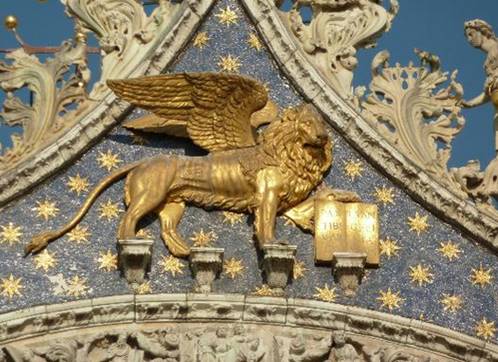
Lion is a symbol of Venice that is used to represent St. Mark, the evangelist and patron of the city (Dover 315).
According to the Christian symbolism, a winged lion with a book representing the patron intends to accentuate the wisdom and protection of the evangelist.
St. Mark’s Basilica in Venice was built in 828 in order to house the remains of St. Mark’s body that was stolen by the Venetian merchants (see Fig. 1).
St. Mark became the patron saint of the city, and his symbolized representation in a gold winged lion became known widely (“San Marco Basilica”).
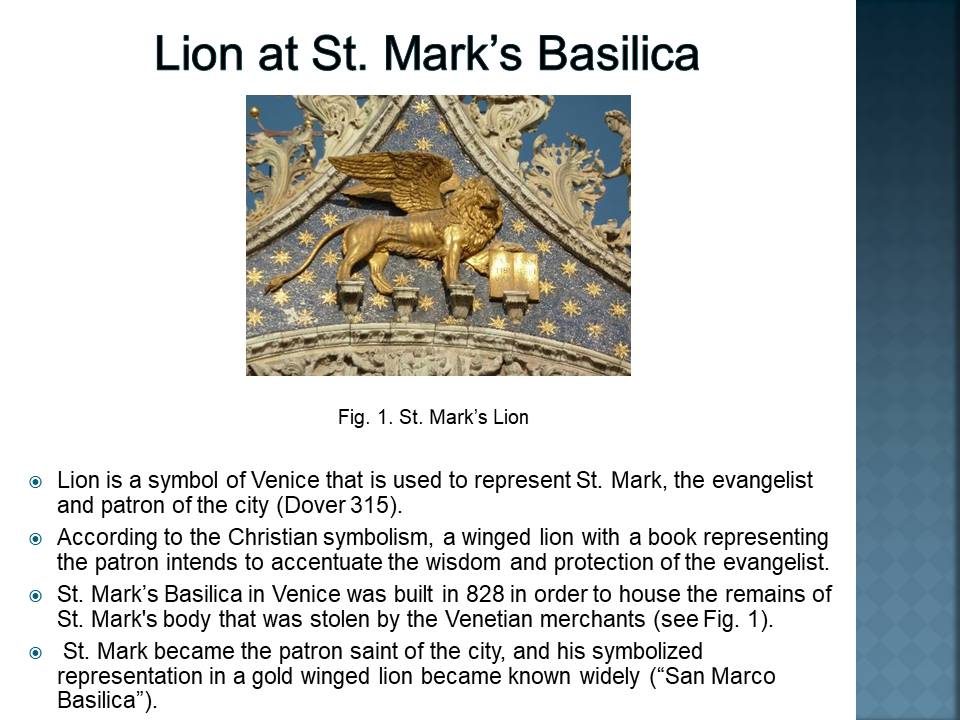
Lion as a Symbol
The golden lion with wings and a book under the statue of St. Mark at the top of the Basilica symbolizes not only wisdom but also the spiritual maturity and growth of the saint (see Fig. 2).
St. Mark Lion’s wings represent the Christian spirituality.
St. Mark Lion’s book represents the religious wisdom of the patron (Hamlett 459).
The words in the book holding by the lion state the first words heard by St. Mark in Venice: “Peace to thee, Mark, my evangelist. Here your body shall rest” (“History of Venice” par. 2).
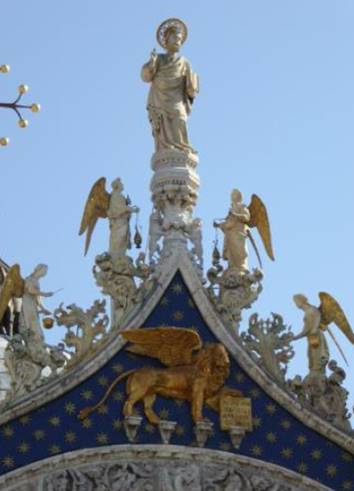
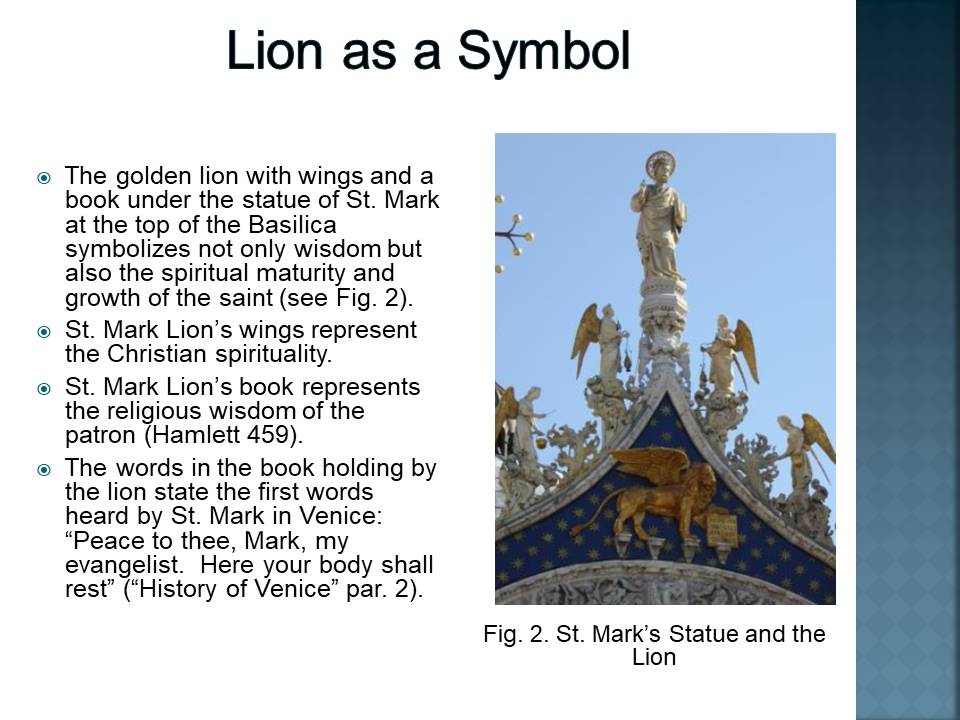
Lions near the Basilica
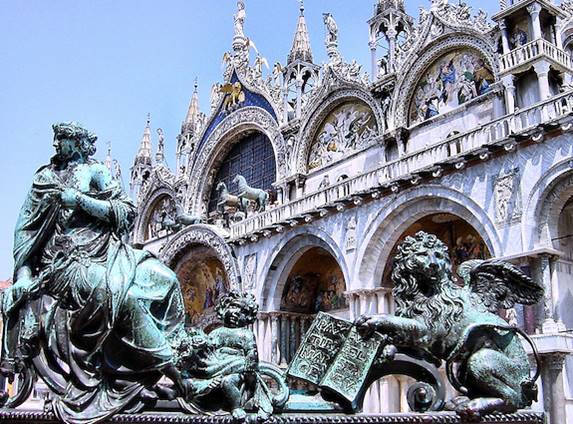
St. Mark’s lions can be observed in many places near St. Mark’s Basilica. The lion on the bronze Loggetta gate in front of the Basilica also holds the open book to present the power of the word (see Fig. 3).
This statue also symbolizes the state’s peace and sovereignty in Venice (Harrison 36).
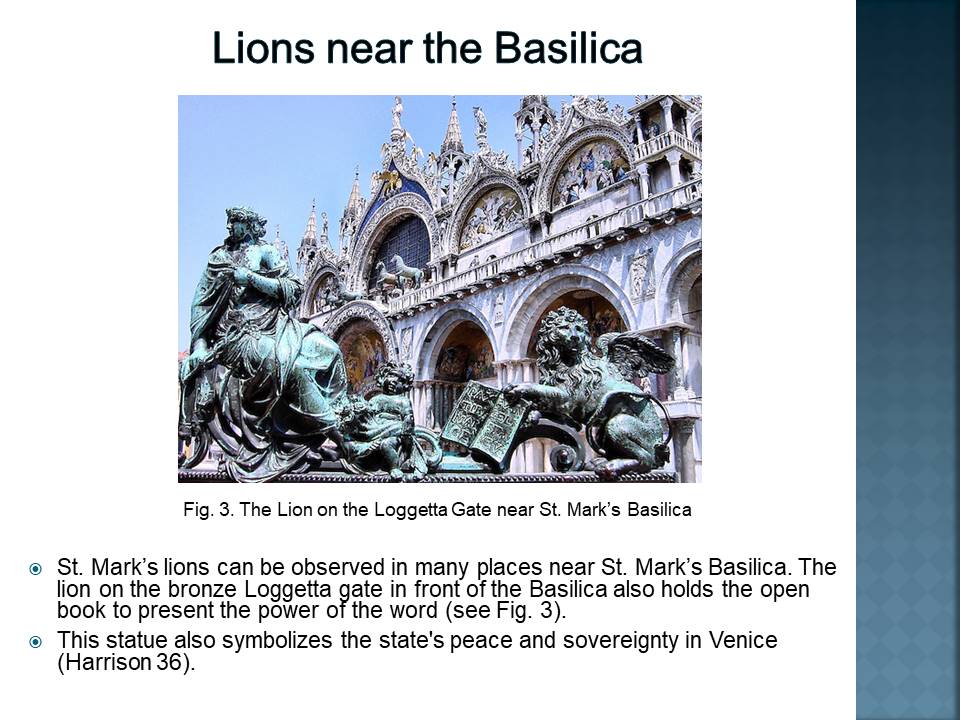
Other Representations of Lions
One more lion representing St. Mark is observed at the war memorial, the Victor Emmanuel Statue in Venice (see Fig. 4).
This lion is set near the female representation of Venice, and it is biting the chains to fight the oppressor. This symbolic presentation of St. Mark is not peaceful, and it accentuates the nature of the protector of the city (Rosand 24).
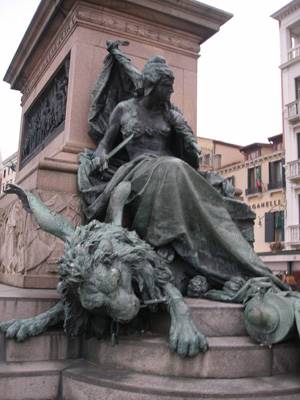

Works Cited
Dover, Paul. “Review Essay: When Myth Encounters History: Recent Work on Renaissance Venice”. Journal of Urban History 32.2 (2006): 314-323. Print.
Hamlett, Lydia. “The Sacristy of San Marco, Venice: Form and Function Illuminated”. Art History 32.3 (2009): 458-484. Print.
Harrison, Keith. “St Mark’s Basilica in Venice”. Reference Reviews 14.6 (2000): 35-36. Print.
History of Venice. n.d. Web.
Rosand, David. Myths of Venice: The Figuration of a State. Chapel Hill: University of North Carolina, 2001. Print.
San Marco Basilica. n.d. Web.